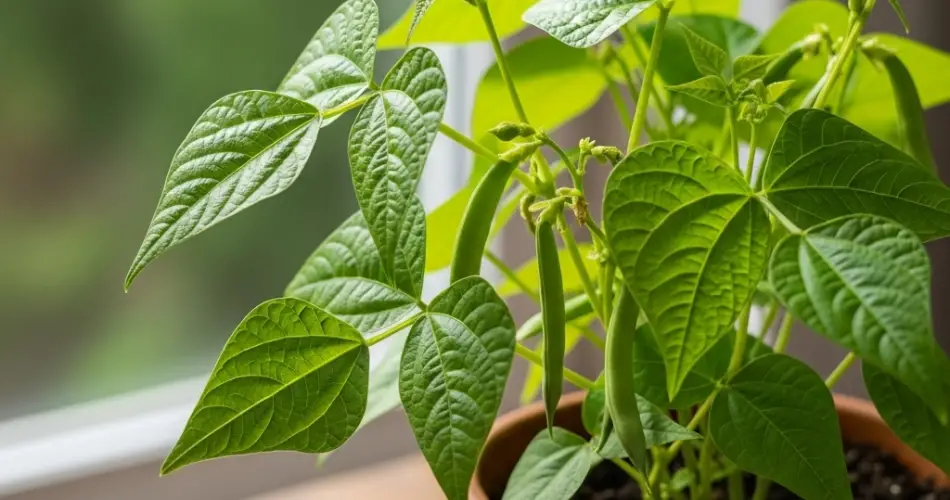Green beans are one of the most satisfying vegetables to grow in containers. They’re quick to mature, require minimal care, and provide a generous harvest in a small amount of space. Whether you have a sunny balcony, a small patio, or even just a windowsill, green beans can thrive in pots—with or without a trellis. The key is choosing the right variety and giving the plants the support and nutrients they need to flourish.
Choosing the Right Variety
There are two main types of green beans to consider when growing in containers:
-
Bush beans: These are compact plants that don’t require support. They’re ideal for smaller pots and limited vertical space. Bush beans mature quickly and produce most of their harvest at once, making them great for quick yields.
-
Pole beans: These climbing varieties produce over a longer period but need vertical support. If you have space for a trellis or can position the pot near a railing or fence, pole beans can give you an extended harvest and add a vertical element to your container garden.
Choose the variety that best suits your available space and harvesting preferences.
Selecting the Right Pot
Green beans don’t require overly deep containers, but they do need enough space for roots to spread and for good drainage. A pot that is at least 25–30 cm (10–12 inches) deep and 30–40 cm (12–16 inches) wide will support several bush bean plants or 2–3 pole beans.
Ensure your container has drainage holes at the bottom. Beans dislike soggy soil and will quickly suffer from root rot in waterlogged conditions. Plastic, ceramic, or fabric grow bags are all suitable options.
Soil and Preparation
Beans grow best in light, well-draining soil rich in organic matter. A high-quality potting mix combined with compost or aged manure is ideal. Avoid heavy or compacted soil that can hinder root development and drainage.
The ideal pH for green beans is between 6.0 and 7.0. Before planting, you can mix in a handful of bone meal or a balanced organic fertilizer to support early root and leaf development.
Planting Your Beans
If using seeds, plant them directly into the pot. Beans don’t transplant well due to their sensitive roots. Sow seeds about 2.5 cm (1 inch) deep and 5–8 cm (2–3 inches) apart. For bush beans, plant them in rows or circles in your pot, and for pole beans, place them around the base of a central support or trellis.
Water thoroughly after planting, and keep the soil moist until the seeds germinate—usually within 5–10 days.
Providing Support for Pole Beans
If you’re growing pole beans, install a support system at the time of planting. You can use a bamboo teepee, trellis, tomato cage, or even a string tied to an overhead beam. Pole beans will naturally climb as they grow, but gently training the vines around the support helps them establish a strong upward pattern.
Bush beans don’t require trellising but may benefit from some gentle support like small stakes if they become top-heavy during flowering.
Sunlight and Watering
Green beans need full sun—at least 6 to 8 hours of direct sunlight per day. Place your pots in the sunniest location available. Insufficient light can lead to weak plants and reduced flowering and fruiting.
Water regularly to keep the soil consistently moist, especially during flowering and pod development. However, avoid waterlogging. A good rule of thumb is to water when the top 2–3 cm (about an inch) of soil feels dry. Mulching the soil surface helps retain moisture and reduces the need for frequent watering.
Fertilizing Your Bean Plants
Beans are light feeders and can fix their own nitrogen, but they still benefit from balanced nutrition. If you started with compost-rich soil, your beans may not need additional fertilizer. If growth slows or the leaves look pale, apply a mild organic fertilizer every two to three weeks.
Avoid high-nitrogen fertilizers, as they promote leafy growth at the expense of flower and pod production.
Dealing with Pests and Problems
Green beans are relatively low-maintenance, but you may occasionally encounter aphids, spider mites, or fungal diseases. Inspect your plants regularly, especially the undersides of leaves. You can treat infestations with a natural insecticidal soap or neem oil spray.
Good airflow, proper spacing, and avoiding overhead watering will help prevent diseases like powdery mildew and rust. If you spot any diseased leaves, remove them promptly.
Harvesting Your Beans
Beans are usually ready to harvest about 50 to 60 days after planting. Pick them when they are firm, crisp, and about the size of a pencil. Don’t wait too long—overripe beans become tough and stringy.
Harvest regularly to encourage the plant to keep producing. For pole beans, the harvest can last several weeks; bush beans may deliver one or two big flushes before slowing down.
Replanting and Continuous Growing
To enjoy green beans throughout the season, stagger your plantings every two to three weeks. Since bush beans have a shorter lifecycle, you can grow multiple successive crops in the same container. Just refresh the soil with compost between plantings.
Whether you use a trellis or go trellis-free, growing green beans in pots is a rewarding and space-saving way to enjoy fresh, homegrown vegetables. With just a little sunlight, water, and care, even a small space can yield a generous crop of crisp, delicious beans ready to harvest and enjoy.



